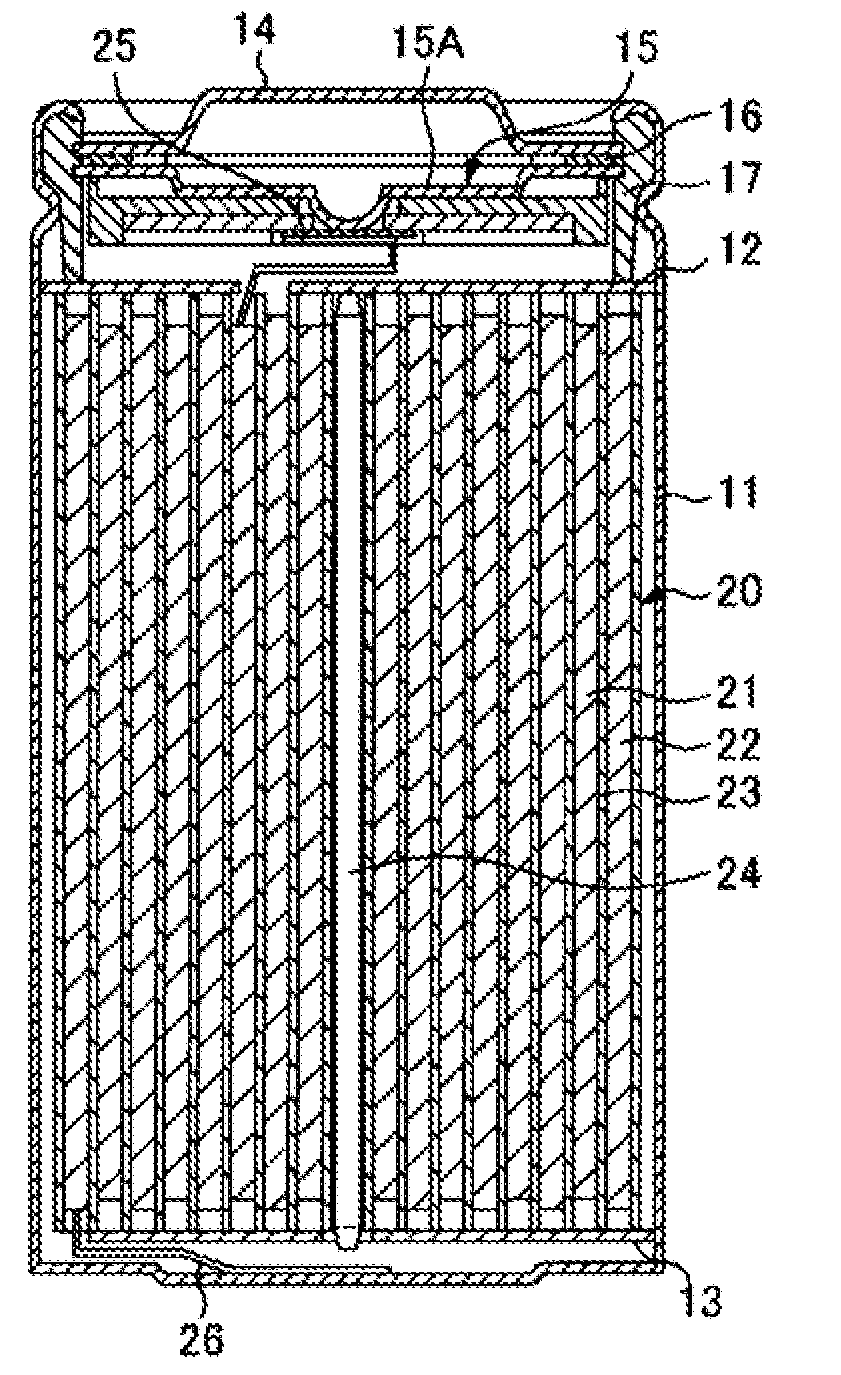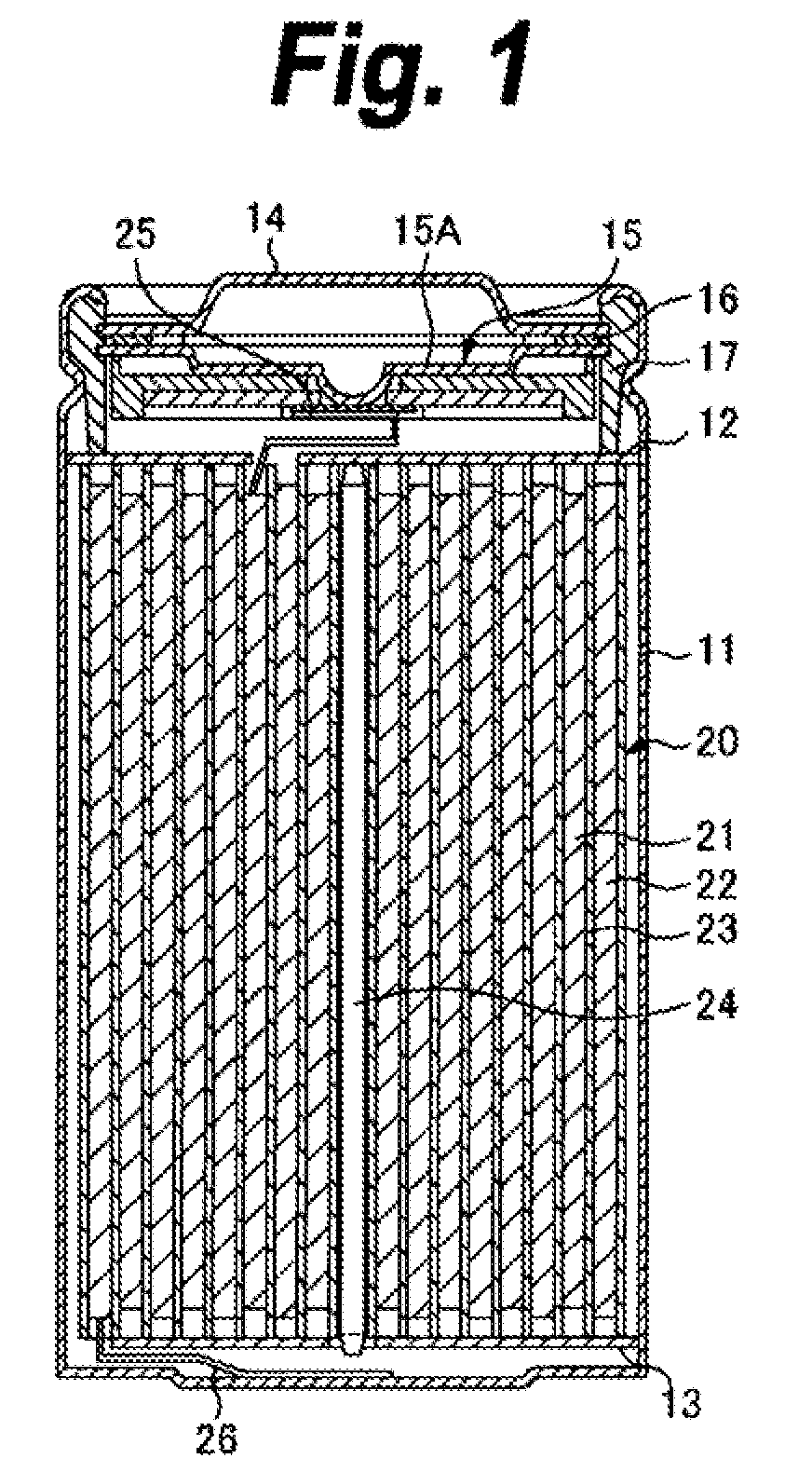Cathode active material, cathode, and nonaqueous electrolyte secondary battery
a secondary battery and active material technology, applied in the direction of cell components, final product manufacturing, sustainable manufacturing/processing, etc., can solve the problems of slow insertion and desorption of lithium during charging and discharging of the battery, thermal runaway of the battery, and low electrical conductivity, so as to reduce the load characteristics of the battery, reduce the resistance between the primary particles and the secondary particles, and increase the resistance of the primary particles.
- Summary
- Abstract
- Description
- Claims
- Application Information
AI Technical Summary
Benefits of technology
Problems solved by technology
Method used
Image
Examples
example 1
[0083]In Example 1, primary particles or secondary particles prepared from the primary particles were used as the cathode active material. When the secondary particles were used, the ratio of the pore diameter of the secondary particles to the average particle diameter of the primary particles was changed to produce secondary batteries and then battery characteristics of the secondary batteries were measured.
[0084]With reference to the secondary particles used as the cathode active material, the secondary particles having pore diameters shown in Table 1 as described below were produced using the lithium iron phosphate (LiFePO4) coated with carbon having average particle diameters of 50 nm, 100 nm, 150 nm, 200 nm, 300 nm, and 500 nm as the primary particles. In Examples, the term “average particle diameter of the primary particles” means an average particle diameter of the total diameter of the carbon coated lithium iron phosphate (LiFePO4) including carbon. The secondary particles w...
example 2
[0138]In Example 2, primary particles or secondary particles prepared from the primary particles were used as the cathode active material. The thickness of the cathode active material layer was changed at a constant volume density to produce secondary batteries and then a DC resistance of the secondary batteries was measured.
[0139]In this regard, the average particle diameter of the primary particles as well as the pore diameter of the secondary particles used in Example 2 were measured in the same manner as described in Example 1.
[0140]93 parts by mass of secondary particles (B / A=0.50) having a pore diameter of 150 nm prepared from primary particles of lithium iron phosphate coated with carbon having an average particle diameter of 300 nm, 2 parts by mass of fibrous carbon as the conductive agent, and 5 parts by mass of polyvinylidene fluoride (PVdF) as the binder were mixed, which was dispersed in an extra amount of N-methyl-2-pyrrolidone to prepare a cathode slurry mixture. The c...
PUM
| Property | Measurement | Unit |
|---|---|---|
| particle diameter | aaaaa | aaaaa |
| particle diameter | aaaaa | aaaaa |
| pore diameter | aaaaa | aaaaa |
Abstract
Description
Claims
Application Information
 Login to View More
Login to View More - R&D
- Intellectual Property
- Life Sciences
- Materials
- Tech Scout
- Unparalleled Data Quality
- Higher Quality Content
- 60% Fewer Hallucinations
Browse by: Latest US Patents, China's latest patents, Technical Efficacy Thesaurus, Application Domain, Technology Topic, Popular Technical Reports.
© 2025 PatSnap. All rights reserved.Legal|Privacy policy|Modern Slavery Act Transparency Statement|Sitemap|About US| Contact US: help@patsnap.com



